The nuclear baton of the US Navy (part 6)
However, the American strategists were not satisfied with the relatively small range of launch of the Polaris SLBM of the first modifications, which did not exceed 2800 km. In addition, the accuracy of hitting monoblock warheads effectively affected only large areal targets — that is, in the 60s of the SLBMs, as well as ICBMs because of significant QUO — they were typical “killers of cities”. Such weapons could implement the policy of “nuclear deterrence”, threatening the enemy with the destruction of many millions of civilians and the total destruction of political and economic centers. But to win the war with missiles alone, even if equipped with very powerful megaton class warheads, was not possible. The main part of the Soviet divisions was stationed outside densely populated cities, and the bases of medium and long-range missiles “spread out” practically throughout the entire territory of the USSR were low-vulnerable for SLBMs and ICBMs. Even with the most optimistic scenarios for the development of a global conflict for the USA and NATO, a significant part of the Soviet nuclear potential was able to cause unacceptable damage to the aggressor, and the repeated superiority of the USSR and the Warsaw Pact countries in conventional weapons did not allow the US European allies to win the land battle. In the event of a global conflict, the Americans, having suffered significant losses, still had chances to sit out across the ocean, but the fate of the NATO countries in Europe would not be enviable.
Although in the 60s, American SSBNs and their weapon systems were significantly superior to the Soviet counterparts, the US Department of Defense leadership needed an SLBM with a launch range of at least the same as the third Polaris to gain a total advantage over the USSR individual-guided warheads. Working ahead of the curve, already in 1962, Lockheed Corporation experts, based on their own technological capabilities, made the necessary calculations. The submissions to the Department of Special Development of the US Navy said that the creation of such a missile is possible within 5-7 years. Moreover, its starting weight relative to the flight tests of the Polaris A-3 rocket passing at that time will approximately double. Initially, the new rocket wore the name Polaris "B-3, but later it was renamed UGM-73 Poseidon C-3 to justify the sharp increase in the cost of the program.
To be fair, I must say that Poseidon had little to do with the third modification of the Polaris. If the rocket length did not increase much - from 9,86 to 10, 36 m, then the diameter of the case increased from 1,37 to 1,88 mm. The mass has become almost twice as large - 29,5 t against 16,2 t in “Polaris A-3”. Like at Polaris, fiberglass with fiberglass winding and subsequent sizing with epoxy resin was used in the manufacture of Poseidon engines.
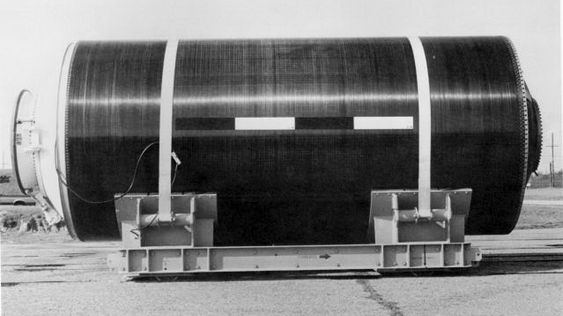
The first stage solid fuel engine developed by Hercules had an original design. It was controlled by a nozzle, which was deflected by hydraulic actuators. The nozzle from an aluminum alloy for reduction of the total length of the rocket was drowned in a fuel charge and put forward after start. In flight, to ensure a turn on the angle of rotation, a system of micro nozzles was used, using the gas produced by the gas generator. The second stage engine from Thiokol Chemical was shorter and was structurally notable for a nozzle made of fiberglass with a graphite liner. The fuel used in the engines of the first and second stages was the same: a mixture of artificial rubber with ammonium perchlorate and the addition of aluminum powder. Behind the engine of the second stage was located the instrument compartment. Thanks to the use of a new three-axis gyro-stabilized platform, the control equipment provided the KVO around 800 m. The principal innovation implemented in the UGM-73 Poseidon C-3 SLBMs was the use of warheads with individual targeting. In addition to warheads, the rocket carried a wide range of missile defense weapons: false targets, dipole reflectors and jammers. Initially, with a view to unification and economy, the military insisted on using the new rocket designed for deploying the Mk.12 targeting system and combat units Mk.30 created for the intercontinental ballistic missile of the mine-based LGM-62G Minuteman-III. The ICBMs that were in service with the strategic missile wings of the United States Air Force carried three W170 warheads with an 3-kt capability. However, the command of the fleet, wishing to increase the strike power of its SLBMs, was able to prove the need to equip the new missiles with a large number of warheads with individual guidance. As a result, the Poseidon missiles were completed with Mk.68 units with W50 thermonuclear warheads, 6 CT power, in quantities from 14 to 6 units. Subsequently, the standard versions of steel SLBMs with 10-XNUMX warheads.
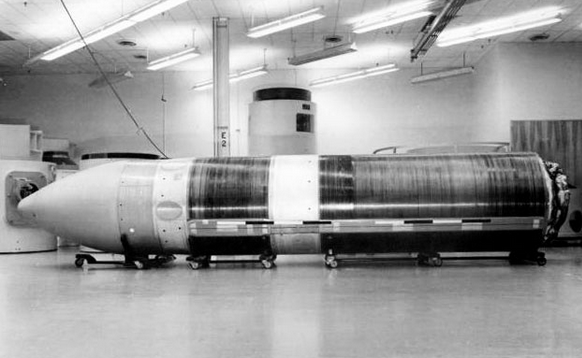
The maximum throw weight was 2000 kg, but depending on the weight of the combat load and the number of warheads, the range could vary significantly. Thus, when launching 14 missiles with warheads, the launch range did not exceed 3400 km, with 10 - 4600 km, with 6 - 5600 km. The combat unit breeding system provided guidance to targets located in the 10 000 km ² area.
The launch was made from depth to 30 m. All 16 missiles could be shot in 15 minutes. The preparation time for the launch of the first rocket was 12-15 minutes. After the rocket emerged from the water and at a height of 10 — 30, the first-stage engine was started. At an altitude of about 20 km, the first stage was shot off and the second stage engine was started. The rocket was controlled at these stages with the help of deflecting nozzles. After disconnecting from the second stage, the head part continued the flight, producing a consistent shooting of the warheads along a predetermined trajectory. The body of the Mk.3 combat unit was made of a thermoprotective beryllium alloy with an ablative graphite toe. The graphite sock had an asymmetrical shape and in flight in dense layers of the atmosphere, which gave the block a spin to prevent uneven burning. Special attention was paid to protection against penetrating radiation capable of disabling control equipment and plutonium charge. As is known, the first Soviet and American antimissiles were equipped with thermonuclear warheads with an increased neutron radiation yield. Which was supposed to "neutralize" the electronics and launch a nuclear reaction in the plutonium nucleus, with the result that the warhead failed.
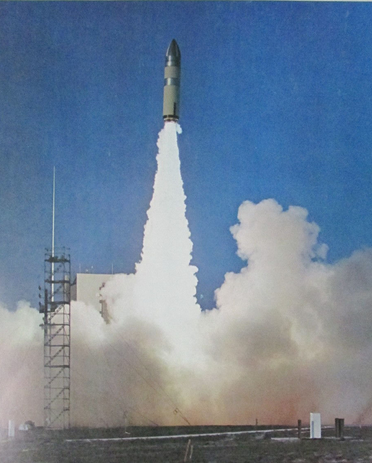
Launch of the UGM-73 Poseidon C-3 prototype SLBM from the test site of the Eastern Missile Range
Flight tests of the prototypes began in August 1966. The missiles were launched from ground launchers at the Eastern Test Site in Florida. The first launch from the USS James Madison submariner (SSBN-627) took place on July 17 of the year 1970. 31 March 1971 of the year this boat for the first time went on combat patrols.
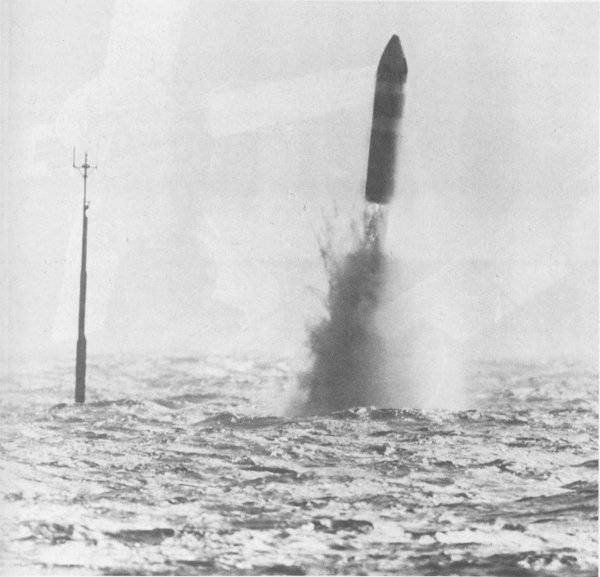
Nuclear submarines of the type “James Madison” are actually upgraded boats of the type “Lafayette”. Constructively, externally and according to the running data, they hardly differed from their predecessors, but at the same time they were quieter and had improved sonar equipment.
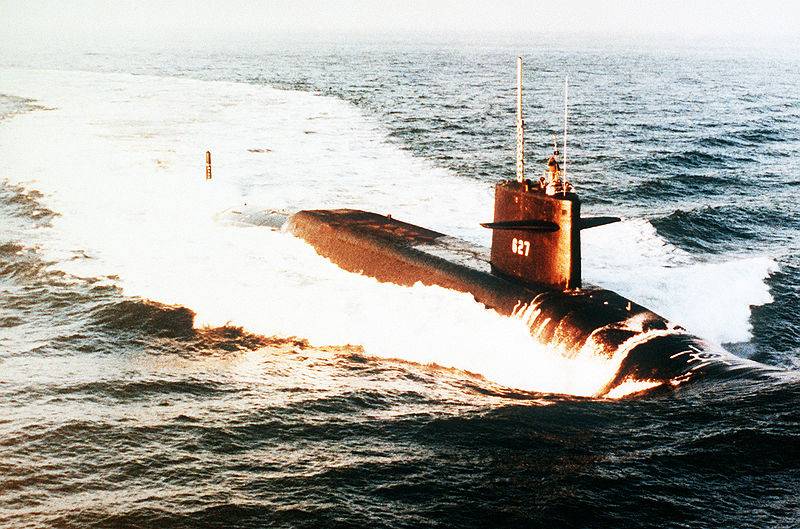
However, after the rearmament of the Poseidon missiles in the USA, they began to be considered a separate type of SSBN. In total, the US Navy received a series of X-Numx missile carriers of the type "James Madison." From March 10 to April 1971, all 1972 boats were re-equipped with Poseidon missiles. At the same time, the diameter of the rocket mines was increased and a new fire control system was installed.
The UGM-73 Poseidon C-3 SLBMs were also installed on Lafayette and Benjamin Franklin SSBNs. The headboat Benjamin Franklin (SSBN-640) entered into service on October 22 1965.
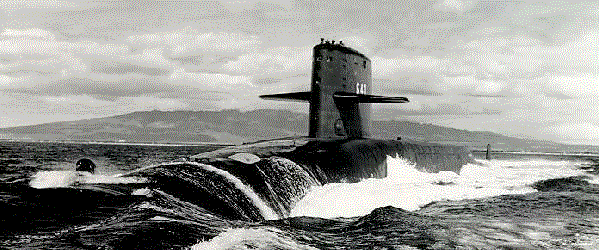
In addition to more sophisticated equipment, the boats from the Lafayette and James Madison submarines, in addition to more advanced equipment, differed in the main turbo-gear unit with sound-absorbing material and propeller, which reduced noise.
The boats were reequipped during scheduled overhauls. Lafayette type SSBNs, previously carried the Polaris A-2 complex, the rest were Polaris A-3. The rearmament from the Polaris to the Poseidon began in the year 1968 and ended in the year 1978. Ten missile carriers of the early construction of the type “George Washington” and “Eten Allen” saved the missiles “Polaris A-3”. It was not possible to rearm them with the Poseidon because of the small diameter of the rocket mines. In addition, a number of experts expressed the opinion that, due to problems with maintaining the desired depth caused by design features, the submarines of the “George Washington” type could not have been able to fire off an SLBM with a starting mass of more than 20 tons at rocket launches.
The boats armed with the Polaris carried service in the Pacific Ocean, patrolling along the eastern coast of the USSR. The rocket carriers with the Poseidons operated in the Atlantic and the Mediterranean. For them, advanced bases in Scotland and Spain were equipped. The adoption of the Poseidon C-3 missiles significantly increased the combat capabilities of the US Navy. With a constant number of submarines and missiles, the number of warheads placed on them increased 2,6 times. If in the 1967 year, the 656 warheads were installed on the Polaris 2016 missiles, in the 1978, the Poseidon 496 missiles were deployed up to 4960 (in reality, there are fewer, since some of the missiles were with 6 warheads) fusion combat units, plus 480 on the missiles "Polaris A-3". Thus, about 5200 thermonuclear warheads were deployed on submarine ballistic missiles, increasing the contribution to the US nuclear arsenal to 50%. Already at the end of 70, the naval component of the US SNF came out on top by the number of warheads placed on the carriers and continues to hold it to the present day.
At the same time, the UGM-73 Poseidon C-3 rocket combat service was not cloudless. Although the starting reliability of the Poseidon was approximately 84%, this rocket has earned a reputation for being capricious and difficult to operate, which was promoted by the need for careful debugging of the onboard control equipment.
Information concerning various kinds of incidents with nuclear weapons that occurred aboard submarine missile carriers and naval arsenals during the years of the Cold War were carefully classified. But, nevertheless, in the media all the same, something has leaked. Somewhere in 1978, it turned out that the W68 warheads do not meet safety requirements. So the American experts in the field of nuclear weapons write about their "high fire danger." As a result, 3200 warheads before 1983, were refined, and the rest were sent for recycling. In addition, during the test and control launches of inert warheads, a manufacturing defect of the graphite sock of the Mk.3 combat unit emerged, which led to the need to replace them on all warheads.
But, despite some shortcomings, it should be recognized that the Poseidon rocket significantly increased the strike power of American SSBNs. And it's not just a sharp increase in the number of deployed warheads. Even during the design, the UGM-73 Poseidon C-3 SLBM planned to install an astrocorrection guidance system, which would drastically improve the accuracy of targeting warheads to the target. However, at the request of the military in order to reduce development time and minimize technical risk, the already mastered inertial navigation system was adopted. As mentioned in the QUO warheads of the SLBM "Poseidon" was originally about 800 m, which was not very bad for the INS. In the second half of 70-x as a result of several stages of modernization of the navigation system NAVSAT (Navy Navigation Satellite Syste - Maritime Navigation Satellite System), which increased the accuracy of determining the coordinates of submarine rocket carriers and the rocket computing unit using an electrostatic suspension, CVT managed to bring to 480 m. As a result of increasing the accuracy of shooting, American nuclear submarines with Poseidon missiles were no longer just "city killers." According to American data, the probability of hitting a W68 thermonuclear warhead with a 50 power of kt targets such as command bunkers and missile mines that withstand an overpressure of 70 kg / cm² is slightly higher than 0,1. However, given the fact that several warheads could be aimed at one target and the successive strikes of successively launched missiles, the American strategic nuclear forces for the first time received the possibility of virtually guaranteed destruction of particularly important targets.
The development of Soviet strategic nuclear forces went the other way. The Soviet Union also built nuclear submarines. But unlike the United States, our focus in the 60-70s was on heavy silo-based ICBMs. Soviet missile submarine cruisers of strategic purpose compared to American boats went on combat patrols in 3-4 times less. That was due to the lack of repair facilities in the home areas of SSBNs and the lack of missile systems with liquid missiles. The Soviet response to a sharp increase in the number of warheads on American SLBMs was the development of anti-submarine forces capable of operating in the oceans, far from their shores. Now the main task of the Soviet atomic torpedo submarines in the event of a full-scale conflict in addition to actions on communications and the destruction of carrier-assault groups, was the fight against American SSBNs. In November, 1967, the first atomic torpedo submarine, etc., was introduced into the USSR Navy. 671. In the future, on the basis of this very successful project, boats were created and built in large series: 671PT and 671PTM. In terms of noise, Soviet nuclear submarines of these projects were close to American Los Angeles-type nuclear submarines, which allowed them to secretly monitor the US Navy SSBN in peacetime. In addition, in May 1966, by order of the USSR Navy Main Command, a class of large anti-submarine ships (BOD) was introduced. In 60-70, special ships were built: 61, 1134А and 1134Б projects, and during the overhaul, the destroyers of 56 avenue were transformed into anti-submarine ave. 56-PLO. The composition of the weapons BOD pr. 1134A and 1134B in addition to anti-submarine torpedoes and jet bombs, guided missile-torpedoes, which could be equipped with conventional and "special" combat units. Special anti-submarine helicopters, with hydroacoustic buoys and submerged hydrophones, could increase the effectiveness of the fight against submarines. In December, the large anti-submarine cruiser (helicopter carrier) "Moscow", 1967 avenue, was specially commissioned to search and destroy enemy's atomic submarines in remote areas of the World Ocean. His aviation group included X-NUMX anti-submarine Ka-12PL helicopters. In January, the 1969 of the year, the naval aviation adopted the anti-submarine aircraft IL-38, which was a functional analogue of the American F-3 "Orion". The Il-38 complemented the Be-12 amphibian, whose operation began in the year 1965. Specially modified Be-12 and IL-38 could carry the nuclear depth bomb 5Ф48 "Scalp" and 8Ф59 ("Skat"). In the 70-e for the use of "special ammunition" finalized helicopters. But, despite significant financial investments and a variety of anti-submarine weapons, the USSR Navy was not able to destroy most of the American SSBNs before they launched missiles.
Thus, against the background of an increase in the number of Soviet ICBMs, improvements in their characteristics and the appearance of anti-submarine ships of the ocean class in the USSR, the Poseidon deployed SLBMs no longer seemed such a perfect weapon and could not provide guaranteed superiority in global conflict. Wanting to increase the importance of nuclear missile submarines in the structure of the American strategic nuclear forces and to consolidate the success achieved in the eternal rivalry with the Air Force, the American admirals at the end of 60, even before adopting the UGM-73 Poseidon C-3 missile, began developing an SLBM with an intercontinental firing range. This, in turn, should have further increased the combat stability of American SSBNs, allowing them to strike at the territory of the USSR while on patrol in areas inaccessible to Soviet anti-submarine forces.
Nevertheless, the combat service of the UGM-73 Poseidon C-3 was quite long, which indicates a high perfection of the rocket. To equip the Poseidon SLBM from June 1970 to June 1975, the WNNXX 5250 warheads were assembled. According to data published on the website of the Lockheed Corporation, the customer has been supplied with 68 missiles. The last Poseidon boat was decommissioned in the 619 year, but the missiles and warheads were in storage until the 1992 year.
Продолжение следует ...
Based on:
http://www.designation-systems.net/dusrm/m-73.html
https://flot.com/publications/books/shelf/vedernikov/ussr-usa/5.htm
https://fas.org/nuke/guide/usa/slbm/c-3.htm
http://rbase.new-factoria.ru/missile/wobb/poseidon/poseidon.shtml
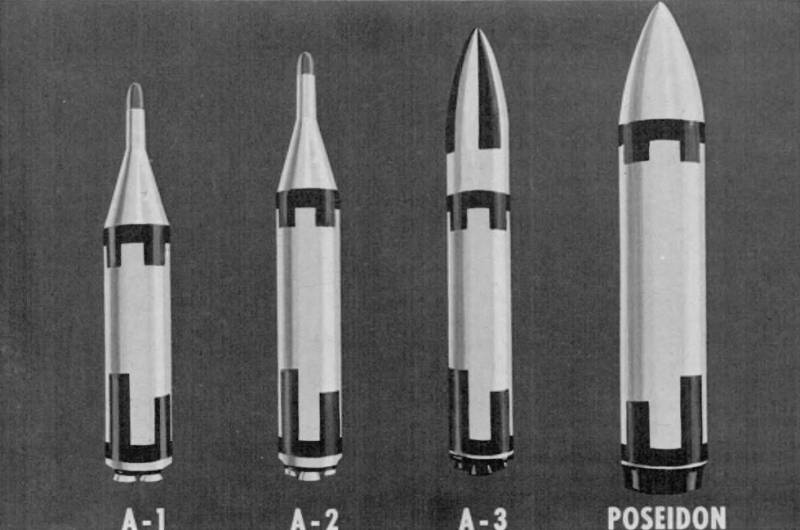
Information